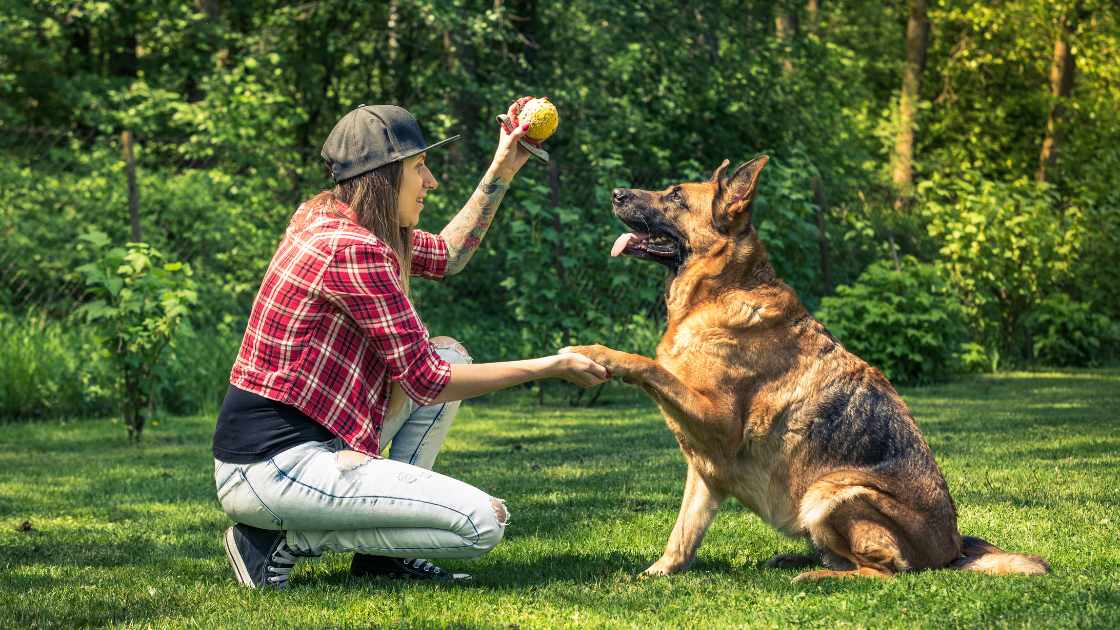
Obedience training is a crucial aspect of responsible dog ownership, contributing to a harmonious relationship between you and your furry friend. While there are various approaches to training, employing positive reinforcement and consistency is widely considered the most effective and humane method. In this article, we will explore the correct way to obedience train a dog, focusing on positive reinforcement techniques.
Table of Contents
ToggleThe Correct Way to Obedience Train Your Dog: A Comprehensive Guide
Understanding Positive Reinforcement
Positive reinforcement involves rewarding your dog for displaying desired behaviors, making them more likely to repeat those behaviors in the future. Rewards can include treats, praise, toys, or any other positive stimulus that motivates your dog. This method creates a positive association with the desired behavior, making learning enjoyable for your pet.
Key Steps for Obedience Training
Start Early
Begin training your dog as early as possible, ideally when they are still a puppy. Early training helps prevent the development of undesirable behaviors and establishes a strong foundation for obedience.
Use Clear Commands
Consistency is key when using verbal commands. Choose simple, clear words for each command, and ensure that all family members use the same cues to avoid confusion. Common commands include “sit,” “stay,” “come,” and “down.”
Positive Reinforcement
Reward your dog immediately after they successfully follow a command. Use treats, praise, or affection to reinforce the positive behavior. Timing is crucial, as your dog needs to associate the reward with the specific action.
Be Patient and Consistent
Dogs learn at different rates, so be patient and consistent in your training efforts. Practice commands regularly in various environments to reinforce learning and ensure your dog can generalize the behavior.
Avoid Punishment
Positive reinforcement focuses on rewarding good behavior rather than punishing mistakes. Punishment can create fear and anxiety, hindering the learning process and damaging the bond between you and your dog.
Socialization
Expose your dog to various people, animals, and environments to promote socialization. Well-socialized dogs are more likely to be obedient in different situations.
Professional Training Classes
Consider enrolling your dog in professional training classes led by experienced trainers. These classes provide structured learning environments and can be particularly beneficial for first-time dog owners.
Consistency in Rules
Establish consistent rules for your dog to follow. For example, if you don’t allow your dog on the furniture, enforce this rule consistently to avoid confusion.
Use Leverage
Leverage your dog’s natural instincts and desires in training. For instance, use their love for play to reinforce commands or incorporate obedience exercises into playtime.
FAQs
What is the correct age to start obedience training for a dog?
deally, it’s best to start obedience training when your dog is still a puppy. Early training helps prevent the development of undesirable behaviors and establishes a strong foundation for a lifetime of obedience.
How important is positive reinforcement in obedience training?
Positive reinforcement is crucial in obedience training. It involves rewarding your dog for displaying desired behaviors, creating a positive association with those actions. This method not only motivates your dog but also strengthens the bond between you and your pet.
Can punishment be effective in obedience training?
Using punishment in obedience training is generally discouraged. Positive reinforcement focuses on rewarding good behavior, as opposed to punishing mistakes. Punishment can lead to fear and anxiety, hindering the learning process and potentially damaging the relationship between you and your dog.
Final Thought
Obedience training is a rewarding journey that enhances the bond between you and your canine companion. By employing positive reinforcement techniques, maintaining consistency, and being patient, you can ensure that your dog becomes a well-behaved and happy member of your family. Remember that each dog is unique, so adapt your training approach to suit their individual needs and personality. With dedication and a positive attitude, you’ll find that training your dog can be a fulfilling and enjoyable experience for both of you.
